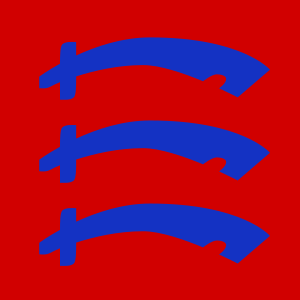223rd Brigade (United Kingdom) facts for kids
Quick facts for kids 3rd Provisional Brigade223rd Mixed Brigade 223rd Independent Infantry Brigade |
|
|---|---|

Formation sign used by the 223rd Independent Infantry Brigade from November 1941 to November 1942.
|
|
| Active | 1915–1919 1940–1942 |
| Country | |
| Branch | |
| Type | Infantry |
| Role | Home Defence |
| Size | Brigade |
| Commanders | |
| Notable commanders |
Brigadier Sir Alexander Stanier, Bart 1940 — 1942 |
| Insignia | |
| Insignia worn by the brigade troops while in the Essex County Division. |  |
The 223rd Brigade was a special group of soldiers in the British Army. They were formed to protect the home country during both World War I and World War II. This brigade had a few different names over the years. It even became an airborne (parachute) unit later on.
Contents
Protecting Britain in World War I
When World War I started, the British Army needed many soldiers. The Territorial Force (TF) was a group of part-time soldiers. They were called up to help defend Britain.
Some soldiers from the Territorial Force were not able to go fight overseas. These soldiers stayed home to protect the country. In 1915, these home-service soldiers were grouped into new units. These units were called "Provisional Battalions." They formed special brigades to guard the coast.
The 3rd Provisional Brigade
One of these new groups was the 3rd Provisional Brigade. It was made up of soldiers from eastern England. This brigade included different types of units:
- Soldiers on horseback (Yeomanry)
- Soldiers on bicycles (Cyclist Company)
- Artillery (soldiers who use big guns)
- Infantry battalions (foot soldiers)
- Support teams for supplies and medical care
Brigadier-General H.J. Archdale led this brigade. They were first stationed near Thetford, Newmarket, and Bury St Edmunds. Their job was to protect these areas.
Later, in March 1916, the Provisional Brigades moved. They were sent to guard the South and East Coasts of England. The 3rd Provisional Brigade was based in Norfolk. Its battalions were spread out in towns like Weybourne, Sheringham, and Salthouse.
Becoming the 223rd Mixed Brigade
In 1916, a new law changed things. All soldiers, if healthy enough, could now be sent overseas. This meant the Provisional Brigades needed to change.
So, in December 1916, the 3rd Provisional Brigade became the 223rd Mixed Brigade. Its units were given new names on January 1, 1917. For example, the 43rd Provisional Battalion became the 25th Battalion, King's (Liverpool Regiment).
The brigade's job was also to help soldiers get fit for fighting overseas. In May 1918, the 223rd Mixed Brigade sent one of its battalions to help another division. This division had lost many soldiers in a big battle. The 223rd Brigade stayed active until the end of the war. After the war, it was disbanded.
Protecting Britain in World War II
The 223rd Brigade was brought back for World War II. It was called the 223rd Independent Infantry Brigade (Home). Its job was again to defend the United Kingdom.
This brigade was led by Brigadier Sir Alexander Stanier, Bart. It was first part of the 15th (Scottish) Infantry Division. Then it joined the Essex County Division. Later, it became part of XI Corps and was renamed the 223rd Independent Infantry Brigade.
Units of the 223rd Brigade
The brigade was made up of several infantry battalions. These were groups of foot soldiers. Here are some of the units that were part of the 223rd Brigade:
- 6th Battalion, Northamptonshire Regiment
- 8th Battalion, Suffolk Regiment
- 10th Battalion, Essex Regiment
- 10th Battalion, York and Lancaster Regiment (for a short time)
- 10th Battalion, Somerset Light Infantry (joined later)
- 13th Battalion, Royal Warwickshire Regiment (joined later)
- 223rd Field Ambulance (a medical unit)
Becoming the 3rd Parachute Brigade
On November 7, 1942, the 223rd Independent Infantry Brigade changed again. It became the 3rd Parachute Brigade. This meant its soldiers were trained to jump from planes using parachutes.
The battalions of the 223rd Brigade were converted into new parachute battalions:
- 10th Battalion, Essex Regiment became the 9th Battalion, Parachute Regiment.
- 10th Battalion, Somerset Light Infantry became the 7th Battalion, Parachute Regiment.
- 13th Battalion, Royal Warwickshire Regiment became the 8th Battalion, Parachute Regiment.
The 223rd Brigade number has not been used again since then.

